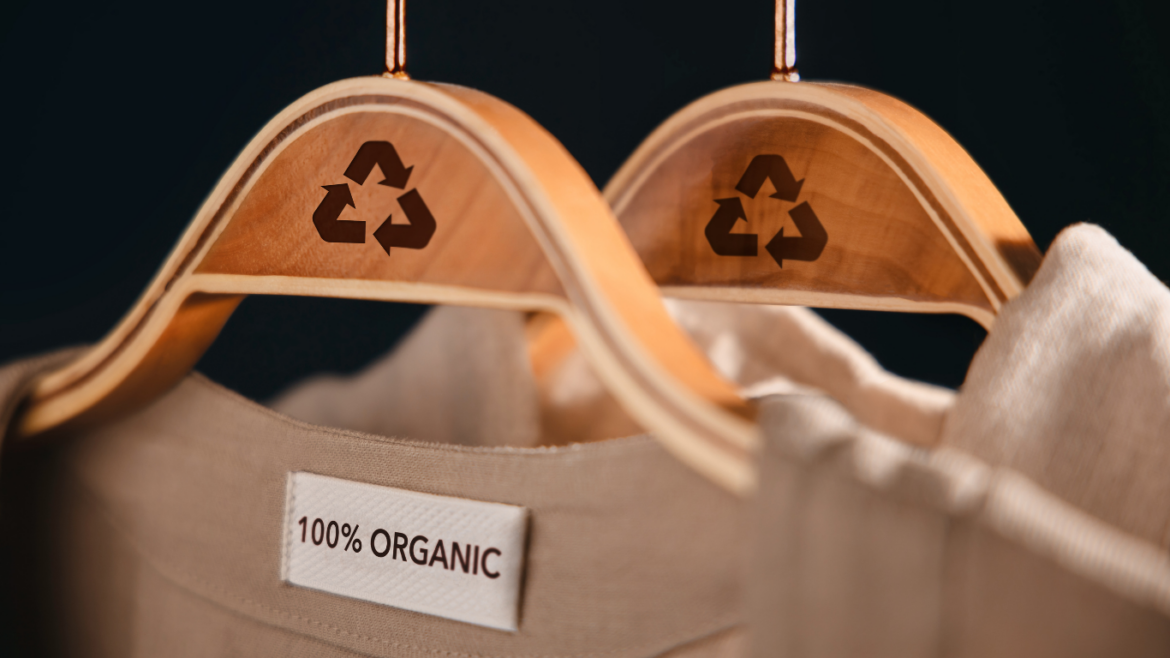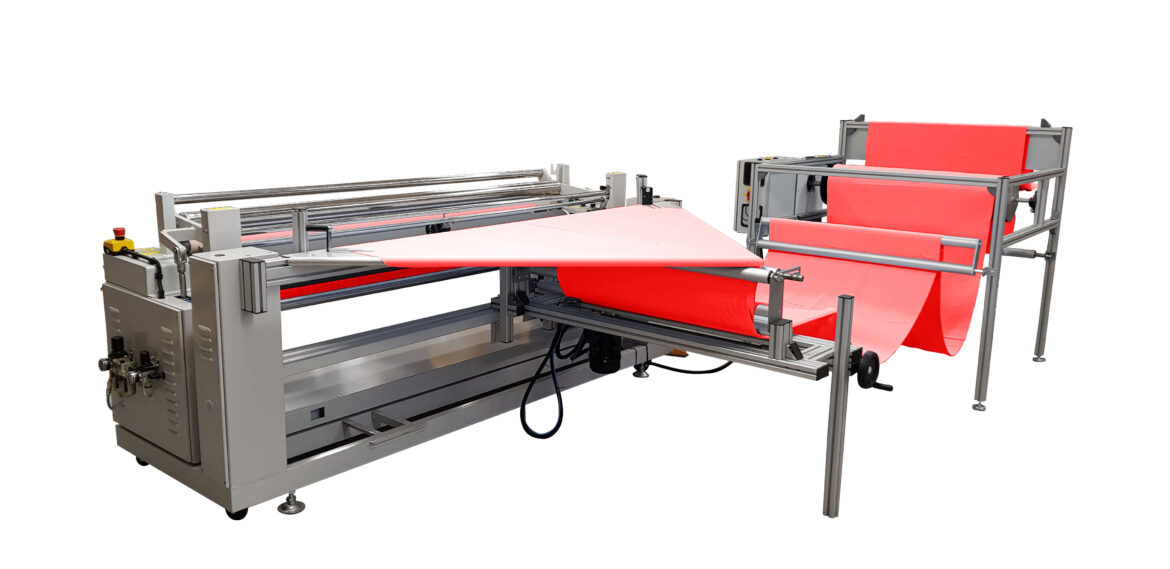As the fashion world gears up for Summer 2025, textile manufacturers and garment producers have a golden opportunity to meet growing demands with innovative materials, smart production techniques, and trend-driven designs. This season is all about sustainability, tech-infused textiles, and nostalgic yet bold aesthetics, making it crucial for manufacturers to stay ahead of the curve.
Consumers are ready to refresh their wardrobes, and retailers will be on the lookout for efficient, cost-effective solutions to stock their shelves with the latest trends. But how can manufacturers prepare for this seasonal surge without compromising on quality, speed, or sustainability?
Let’s explore the top Summer 2025 fashion trends and uncover ways textile producers can maximize their production capabilities while minimizing costs.
Fashion Trends Manufacturers Must Watch
Fashion is a dynamic industry that continuously reinvents itself. As we move into summer, some exciting trends have emerged that manufacturers should integrate into their production planning.
1. Sustainable Elegance: Eco-Friendly Fabrics Take Center Stage
Sustainability is more than just a buzzword—it’s a movement shaping fashion’s future. Consumers are increasingly aware of their environmental impact, leading to a surge in demand for eco-friendly textiles such as:
- Organic cotton
- Recycled polyester
- Plant-based dyes
- Biodegradable fabrics
For manufacturers, adopting sustainable textile options can open doors to new partnerships with eco-conscious brands and appeal to consumers seeking ethical fashion.
2. Tech-Infused Textiles: The Future of Fabric Innovation
Innovation isn’t just for smartphones—it’s transforming textiles too! Expect to see high-tech materials gaining popularity, including:
- Moisture-wicking fabrics for activewear
- UV-resistant textiles for summer essentials
- Temperature-regulating fabrics for everyday wear
- Smart textiles with embedded sensors for health & wellness tracking
By incorporating cutting-edge textile machinery, manufacturers can streamline production processes for these innovative fabrics, ensuring high demand doesn’t slow down efficiency.
3. Retro Revival & Bold Colors: Nostalgic Yet Fresh
Fashion takes a trip down memory lane with 90s-inspired silhouettes, vibrant hues, and retro prints. Think oversized blazers, wide-leg pants, and bright florals.
Manufacturers should focus on:
– Versatile multi-use fabrics
– Cost-effective digital printing techniques for bold designs
– Flexible dyeing processes to create custom hues
With bold statement pieces leading the season, production processes need to be agile while ensuring quality craftsmanship.
How Textile Manufacturers Can Stay Ahead of the Competition
With demand soaring, efficiency is key. Here’s how manufacturers can optimize production and take advantage of fashion’s seasonal boom:
1. Upgrade to Advanced Textile Machinery
The backbone of textile manufacturing is high-performance machinery. Investing in automated systems and AI-driven technologies can dramatically boost production speed while reducing labor costs.
For manufacturers looking to upgrade with minimal expenses, innovative textile machinery from industry leaders like Svegea can provide cost-effective solutions tailored for mass production.
2. Adopt Sustainable Production Methods
Green practices aren’t just a trend—they’re a necessity. Implementing low-waste production techniques and using renewable energy sources in factories can:
– Improve brand image
– Attract eco-conscious retailers
– Reduce long-term costs
3. Leverage Automation for Faster Turnaround
Automated cutting, digital printing, and AI-driven production systems allow manufacturers to:
– Scale production without increasing overhead
– Meet tight deadlines effortlessly
– Reduce fabric waste through precision cutting
Preparing for the Summer 2025 Rush
Textile manufacturers and garment producers have a prime opportunity to take advantage of the Summer 2025 fashion wave. With sustainability, smart textiles, and retro-inspired designs dominating the industry, manufacturers need to stay flexible and innovative.
To supercharge production and reduce costs, partnering with Svegea of Sweden for state-of-the-art textile machinery is a game-changer.
Contact Hakan Steene today at h.steene@svegea.se and get ready to transform your production capabilities!
The textile industry is transforming. With growing concerns about environmental impact, manufacturers are shifting towards sustainable textile practices. From reducing waste to adopting energy-efficient machinery, the industry is embracing innovation to create a greener future.
The Rise of Circular Fashion
Circular fashion is revolutionizing the textile industry. Instead of the traditional linear model, where clothes are made, used, and discarded, circular fashion promotes recycling and reusing materials. Brands are now designing garments with longevity in mind, using biodegradable fabrics and closed-loop production systems.
Key Circular Fashion Strategies:
-
- Recycling & Upcycling: Old textiles are repurposed into new garments, reducing landfill waste.
- Closed-Loop Production: Materials are continuously reused, minimizing resource depletion.
- Biodegradable Fabrics: Natural fibers like organic cotton and hemp decompose without harming the environment.
Zero-Waste Manufacturing: Eliminating Textile Waste
Traditional textile production generates excessive waste. However, zero-waste manufacturing aims to eliminate fabric scraps and optimize material usage.
How Zero-Waste Manufacturing Works:
-
- Precision Cutting: Advanced machinery ensures minimal fabric waste.
- Fabric Optimization: Designers create patterns that maximize fabric efficiency.
- Waste Repurposing: Leftover materials for accessories or insulation.
Eco-Friendly Dyeing Techniques: Reducing Water & Chemical Usage
Dyeing is one of the most polluting processes in textile manufacturing. Fortunately, eco-friendly dyeing techniques are emerging to reduce water consumption and chemical waste.
Sustainable Dyeing Methods:
- Natural Dyes: Extracted from plants and minerals, these dyes are biodegradable.
- Waterless Dyeing: Innovative technologies like CO₂ dyeing eliminate water usage.
- Low-Impact Dyes: Require fewer chemicals, reducing environmental harm.
Automation & Advanced Machinery: Reducing Energy Consumption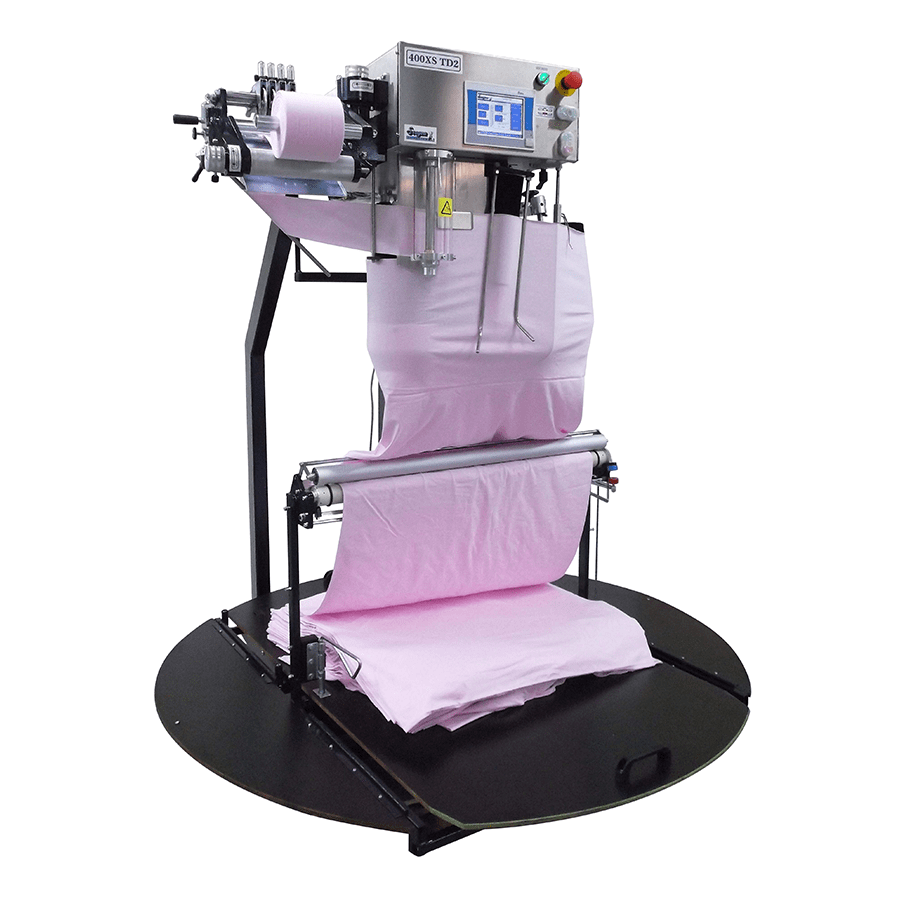
Automation is reshaping textile manufacturing by driving smarter, more sustainable operations. With advanced machinery and AI-powered systems, manufacturers reduce energy consumption, cut material waste, and boost productivity. These technologies fine-tune power usage to lower carbon footprints while delivering consistent speed and precision. By minimizing errors and maximizing efficiency, automation gives textile producers a competitive edge and a cleaner path forward.
Sustainable Textile Manufacturing
Svegea is at the forefront of sustainable textile production. Their innovative machinery enhances efficiency while reducing environmental impact. By integrating automation and precision engineering, Svegea helps manufacturers adopt greener practices without compromising quality.
For more information on sustainable textile manufacturing and product demos, contact Hakan Steene at h.steene@svegea.se.
The textile industry is undergoing a digital revolution, and AI in textile manufacturing is at the forefront of this transformation. Artificial intelligence reshapes how textiles are created, manufactured, and distributed, from optimizing design processes to enhancing production efficiency.
AI in Textile Design: Innovation Meets Creativity
AI is revolutionizing textile design by enabling faster, smarter, and more efficient pattern-making. Designers now use AI-powered tools to generate intricate patterns, predict fashion trends, and customize designs based on consumer preferences.
How AI Enhances Textile Design:
-
- Automated Pattern Generation: AI algorithms analyze vast datasets to create unique textile patterns.
- Trend Prediction: Machine learning models forecast upcoming fashion trends, helping designers stay ahead.
- Customization: AI-driven tools allow brands to personalize designs based on customer preferences.
AI in Textile Production: Efficiency and Precision
AI is streamlining textile production by automating processes, reducing waste, and improving quality control. Manufacturers are integrating AI into machinery to optimize operations and enhance productivity.
Key AI Applications in Textile Production:
AI is transforming textile production through targeted, high-impact applications. Automated 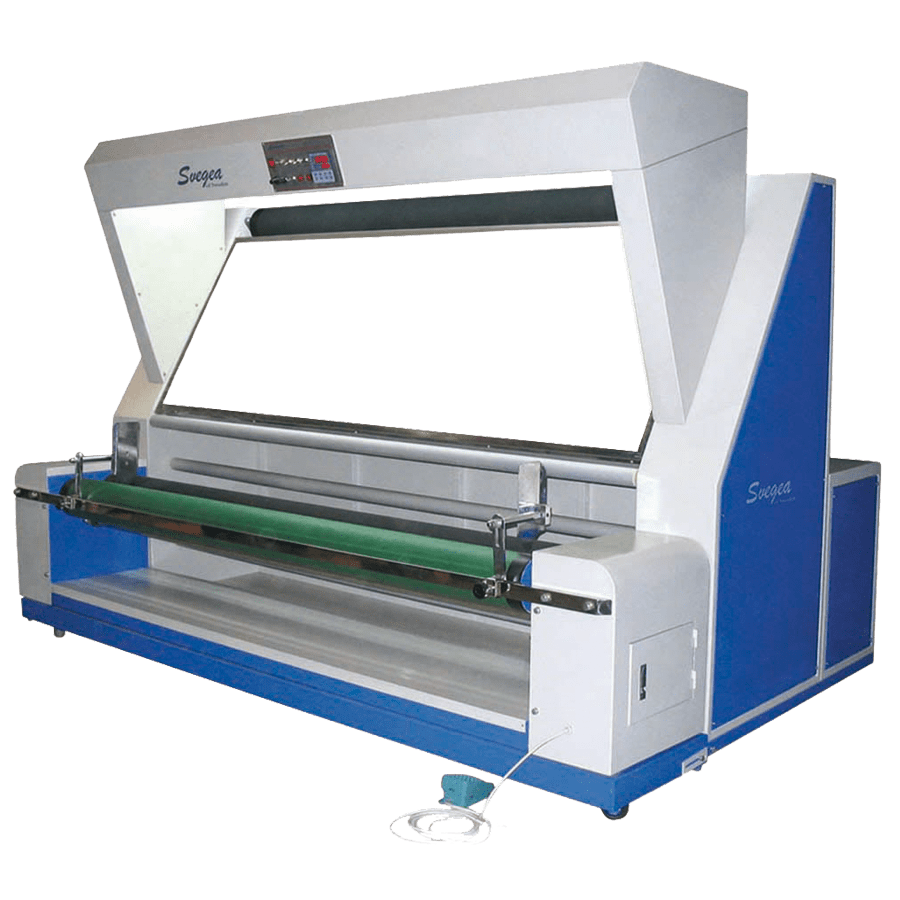 fabric inspection systems now use advanced vision technology to identify defects with precision, ensuring only high-quality materials move forward in the process. On the factory floor, smart manufacturing machines continuously adjust their settings in real time, maximizing efficiency and minimizing downtime. Meanwhile, AI-driven supply chain tools analyze demand patterns and guide resource allocation, keeping operations agile and responsive.
fabric inspection systems now use advanced vision technology to identify defects with precision, ensuring only high-quality materials move forward in the process. On the factory floor, smart manufacturing machines continuously adjust their settings in real time, maximizing efficiency and minimizing downtime. Meanwhile, AI-driven supply chain tools analyze demand patterns and guide resource allocation, keeping operations agile and responsive.
AI-Driven Innovations in the Textile Industry
AI is not just improving efficiency—it’s driving groundbreaking innovations in textile production.
Examples of AI-Driven Innovations:
-
- AI-Powered Smart Textiles: Fabrics embedded with AI sensors for enhanced functionality.
- Predictive Maintenance: AI anticipates machine failures, reducing downtime.
- Eco-Friendly AI Solutions: AI optimizes dyeing processes to minimize environmental impact.
The Future of AI in Textile
AI is transforming the textile industry, making design and production more efficient, sustainable, and innovative. As AI continues to evolve, manufacturers and designers must embrace these advancements to stay competitive.
For more information on AI in textile manufacturing and product demos, contact Hakan Steene at h.steene@svegea.se.
In the competitive garment and textile manufacturing world, efficiency and precision are paramount. Svegea of Sweden, a leader in textile machinery, offers cutting-edge solutions that transform production processes, ensuring higher ROI and safer operations.
Efficiency Meets Innovation
Svegea’s machines are designed to streamline operations and reduce waste. The EC300, known for its precision, ensures consistent quality and faster production times. The Tube Sewing Unit 200A simplifies the creation of bias binding by sewing open fabric into continuous tubular pieces. This innovation minimizes operator assistance while maintaining high productivity.
Adding to their achievements, Svegea received the prestigious New Technology Innovation Award at Texprocess 2023, recognizing the innovative and sustainable design of their textile machinery. Their solutions, such as the award-winning EC-450XF Collarette Cutting System, set benchmarks for precision, efficiency, and eco-friendly manufacturing practices. 
Versatility in Production
Svegea’s Bias-Cutting Systems are ideal for slitting, sewing, and rolling bias-cut fabrics. These systems handle various fabric types, ensuring strong and stretchable materials for diverse applications. Roll Slitting Machines, such as the FA600, offer fully automated solutions for cutting materials like PVC, polyester, and non-wovens.
Customized Solutions for Your Unique Needs
Every garment manufacturer has unique production requirements, and Svegea understands that one size doesn’t fit all. Their ability to customize textile machines to suit your specific needs ensures smarter, more efficient operations. Whether it’s tailoring machinery to fit fabric types, production volumes, or unique manufacturing goals, Svegea provides solutions that seamlessly integrate into your existing workflows. This flexibility makes their machines a smart investment for companies looking to maximize efficiency and adaptability.
Safety and Sustainability
Modern textile machinery prioritizes operator safety and environmental sustainability. Svegea’s machines incorporate intelligent sensors and energy-efficient designs, reducing workplace hazards and supporting eco-friendly practices.
Why Invest in Textile Machinery?
Acquiring advanced machinery is not just an expense—it’s a strategic investment. Svegea’s equipment enhances production efficiency, reduces operational costs, and boosts workforce productivity. With minimal maintenance and optimized resource utilization, these machines guarantee a robust ROI.
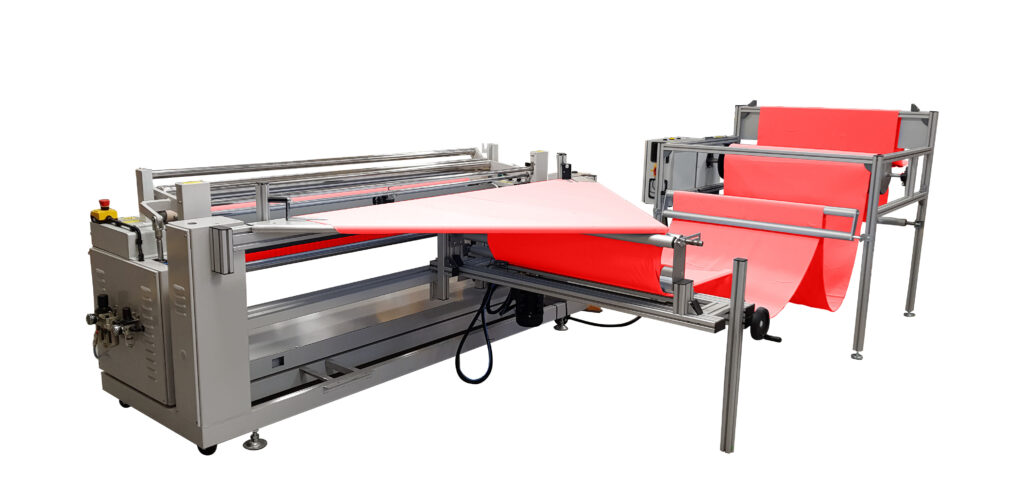 Explore Svegea’s Best-Selling Machines
Explore Svegea’s Best-Selling Machines
Svegea’s portfolio includes:
- Collarette Cutters: Precision-driven textile cutting
- Tube Sewing Unit 200A: Seamless bias binding creation
- Bias Cutting Systems: High-speed slitting and rolling
- Roll Slitting Machines: Automated material cutting
Take the Next Step
Ready to elevate your textile manufacturing? Contact Håkan Steene (h.steene@svegea.se) today for a product demo and discover how Svegea’s innovative machinery can revolutionize your operations.
For more details, visit www.svegea.se.
The textile industry is transforming significantly as companies increasingly bring production back to local markets. This trend, known as onshoring and reshoring, is gaining momentum in regions such as Europe and North America. Various factors, including supply chain resilience, cost-effectiveness, and the desire for high-quality production, drive the shift. In this blog, we will explore the global trend of onshoring and reshoring in the textile industry, discuss how Svegea’s machinery can support manufacturers in achieving their goals, and highlight the benefits of reduced supply chain risks and faster turnaround times.
The Global Trend of Onshoring and Reshoring
In recent years, the textile industry has seen a notable shift towards onshoring and reshoring. This movement involves relocating production processes closer to home, reversing the decades-long trend of offshoring to countries with lower labor costs. Several factors contribute to this shift:
1. Supply Chain Resilience: The COVID-19 pandemic exposed vulnerabilities in global supply chains, prompting companies to reconsider their reliance on distant manufacturing hubs. By bringing production closer to home, businesses can mitigate risks associated with disruptions and ensure a more stable supply chain.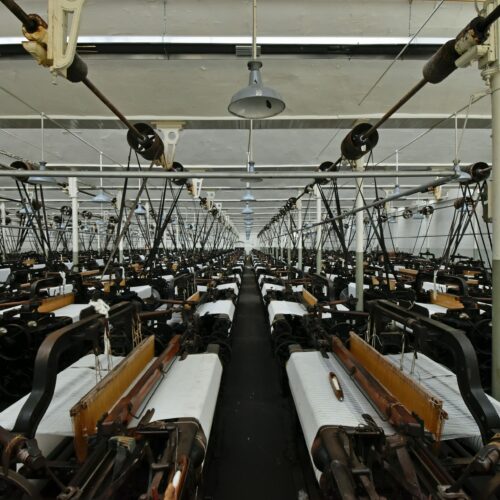
2. Cost-Effectiveness: Rising labor costs in traditional offshoring destinations, coupled with increased tariffs and transportation expenses, have eroded the cost advantages of overseas production. Onshoring allows companies to better control costs and improve profitability.
3. Quality Control: Local production enables manufacturers to maintain higher quality standards and ensure compliance with stringent regulations. This is particularly important in the textile industry, where product quality and sustainability are paramount.
Benefits of Reduced Supply Chain Risks and Faster Turnaround Times
Onshoring and reshoring offer several benefits that can significantly impact the textile industry:
1. Reduced Supply Chain Risks: By relocating production closer to home, companies can reduce their exposure to geopolitical tensions, transportation delays, and other disruptions. This leads to a more reliable and resilient supply chain.
2. Faster Turnaround Times: Local production allows for quicker response to market demands and faster delivery of products. This agility is crucial in the textile industry, where fashion trends and consumer preferences can change rapidly.
3. Improved Customer Satisfaction: Faster turnaround times and higher quality control contribute to better customer satisfaction. When products are delivered on time and meet quality expectations, customer loyalty and brand reputation are enhanced.
Reshaping the Textile Industry
The trend of onshoring and reshoring in the textile industry is reshaping the global production landscape. By bringing manufacturing processes closer to home, companies can achieve cost-effective, high-quality production while reducing supply chain risks and improving turnaround times. Svegea’s advanced machinery plays a pivotal role in supporting this transition, offering efficiency, sustainability, and flexibility to manufacturers.
Enabling Cost-Effective, High-Quality Production
Svegea, a leading provider of advanced textile machinery, plays a crucial role in supporting manufacturers as they transition to onshoring and reshoring. Svegea’s innovative equipment offers several advantages: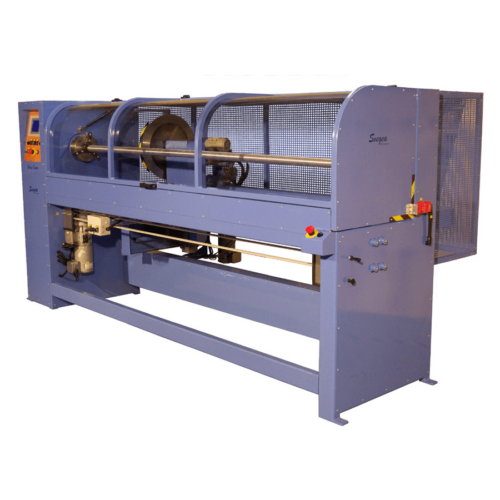
1. Efficiency and Automation: Svegea’s automated textile machines, such as the Fully Automatic Roll Slitting Machine, enhance production efficiency by minimizing waste and maximizing consistency. These machines are designed to handle large volumes quickly and reliably, helping manufacturers meet tight deadlines without compromising quality.
2. Sustainability: Modern textile machinery from Svegea is built with sustainability in mind. These machines consume less energy, use fewer chemicals, and produce less waste. For example, advanced dyeing machines from Svegea use less water and chemicals, reducing the environmental footprint of the dyeing process.
3. Flexibility: Svegea’s equipment is highly adaptable, allowing manufacturers to produce various materials and meet diverse client needs. This flexibility is essential for staying competitive in a rapidly evolving market.
As the textile industry continues to evolve, embracing onshoring and reshoring will be essential for staying competitive and meeting the demands of a dynamic market. To learn more about how Svegea’s machinery can help your business achieve its goals, visit www.svegea.se and contact Hakan Steene at h.steene@svegea.se for personalized assistance.
Photo by Remy Gieling on Unsplash | Photo by Geoff Oliver on Unsplash
Are you ready to witness the latest innovations in textile manufacturing and processing? Mark your calendars for Texprocess Americas 2025, the premier event that brings together industry leaders, innovators, and professionals to explore cutting-edge technologies and trends shaping the future of textiles.
Discover the Latest Innovations
Texprocess Americas 2025 promises an exciting lineup of exhibitors showcasing the newest advancements in textile machinery, software, and materials. This is your chance to see first-hand how industry pioneers are revolutionizing the textile landscape with state-of-the-art solutions designed to enhance efficiency, sustainability, and creativity.
Texprocess Americas, co-produced by SPESA, creates an opportunity for retail, brand, manufacturing executives, and professionals involved in the sewn products industry to meet with leading international manufacturers and distributors of machinery, equipment, parts, supplies, systems, technology, supply chain solutions, and other products and services used for the development of sewn products.
Learn from Industry Experts
The event will feature a series of thought-provoking sessions and workshops led by renowned experts. Attendees will gain invaluable insights into the latest trends, best practices, and strategies to stay ahead in the ever-evolving textile industry. Whether you’re looking to expand your knowledge, network with like-minded professionals, or discover new business opportunities, Texprocess Americas is the place to be.
Join the Celebration of Innovation
In 2023, Svegea of Sweden had the honor of being recognized at the TPA Innovation Awards for our groundbreaking Svegea EC-450XF Collarette Cutting System. This advanced system is celebrated for its unparalleled precision, efficiency, and versatility in textile manufacturing. The Svegea EC-450XF features rapid start and stop capabilities. It is also equipped with swift adjustability of bandwidths and a unique guide system that ensures seamless operations. Crafted from high-quality Swedish steel, it emphasizes durability and longevity, making it a true game-changer in the industry.
Register Now and Be Part of the Future
Don’t miss this opportunity to be at the forefront of the textile revolution. Register now for Texprocess Americas 2025 and secure your spot at the event where innovation meets inspiration. Visit the official website to sign up and stay updated on the latest event news and announcements.
As Svegea of Sweden won’t be physically present, our US counterpart, SewnProducts, will have a booth showcasing their innovative solutions.
Join us at Texprocess Americas 2025 and experience the future of textiles. Let’s innovate, connect, and thrive together!
The fashion industry is in the midst of a seismic shift. Consumers no longer settle for mass-produced garments—they crave unique, customized pieces that reflect their individuality. This surging demand is reshaping brand strategies, revolutionizing production, and redefining how we express ourselves through fashion.
The Rise of Personalized Fashion
Personalization isn’t a new concept—bespoke tailoring has been around for centuries. But thanks to groundbreaking technology, what was once an exclusive luxury is now accessible to the masses.
According to McKinsey’s The State of Fashion 2023 report, 71% of consumers expect brands to deliver personalized experiences, and 76% become frustrated when those expectations aren’t met. () This consumer-driven revolution is forcing the fashion industry to rethink everything, from design to production and delivery.
The Tech Behind the Transformation
Innovation is fueling the personalization boom. Here’s how cutting-edge technology is turning made-to-order fashion into a scalable, profitable reality:
3D Printing: Reinventing Manufacturing
Adidas is a pioneer in this space, integrating 3D printing into their Futurecraft line. Their custom midsoles adapt to individual foot pressure points and gait, providing unparalleled comfort and performance. But the potential extends beyond footwear—startups are now 3D-printing entire garment components, minimizing waste and unlocking design possibilities previously unimaginable.
AI & Machine Learning: Next-Level Personalization
Brands like Stitch Fix blend human stylists with AI-driven algorithms to curate hyper-personalized fashion recommendations. With over 4 million active users, Stitch Fix exemplifies how AI can decode individual style preferences with incredible accuracy.
Body Scanning: Precision Fit, Every Time
Uniqlo has introduced body scanning technology in select stores, allowing customers to create digital avatars for accurate sizing recommendations. This technology eliminates guesswork, reduces returns, and ensures a flawless fit.
The Machinery Powering Personalization
While digital advancements steal the spotlight, specialized machinery is the backbone of small-batch, custom production. One standout player in this arena is Svegea of Sweden.
Svegea’s Role in Personalized Fashion
Svegea, a leader in textile machinery manufacturing, develops precision bias-cutting machines that enable small-batch production without sacrificing quality. Their collarette cutting machines, crucial for trim and binding production, make detailed customization viable at scale.
Automation: The Secret to Scalable Customization
Contrary to popular belief, automation isn’t the enemy of personalization—it’s the key to making it efficient.
Smart Factories: Rapid, Flexible Production
Advanced robotics and computer-controlled cutting systems can switch between personalized designs seamlessly, drastically cutting lead times. What once took weeks can now be produced in days, meeting consumer expectations for speed and exclusivity.
On-Demand Manufacturing: Redefining Fashion’s Business Model
The traditional model of mass-producing inventory is fading. Instead, agile, on-demand production is emerging as the future.
- Made-to-Order Success Stories: Companies like Proper Cloth create perfectly tailored shirts based on individual measurements, eliminating inventory waste and boosting customer satisfaction.
- Microfactories for Localized Production: The concept of small, tech-powered production hubs is gaining traction. According to Fashion for Good, micro-factories can reduce carbon emissions by up to 35% compared to traditional supply chains.
Why Consumers Love Customization
Beyond the cool factor, there are deeper reasons why personalized fashion is taking over:
1. A Unique Identity
In a world of fast fashion, standing out is more important than ever. Studies show that 80% of consumers are more likely to buy from brands that offer personalized experiences.
2. The Perfect Fit
Sizing inconsistencies have plagued shoppers for decades. Custom-fitted clothing eliminates this issue, reducing costly returns—an issue that costs the fashion industry $300 billion annually.
3. Sustainability at Its Core
Personalized fashion isn’t just stylish—it’s eco-friendly.
- Less Waste: On-demand production slashes overproduction and reduces landfill-bound inventory.
- Longer Wear: Research suggests personalized items stay in a consumer’s wardrobe up to 50% longer than mass-produced alternatives.
Brands Leading the Charge
Several fashion giants are proving that personalization isn’t just a gimmick—it’s a game-changer.
- Nike By You (formerly NIKEiD) allows customers to customize every element of their sneakers, adding over $1 billion in direct-to-consumer revenue.
- Ministry of Supply offers 3D-printed knit blazers, tailored to individual measurements in under 90 minutes.
- Unspun uses body scanning to create zero-inventory, custom-fit jeans, reducing carbon emissions by up to 40%.
Challenges & The Future of Personalized Fashion
Despite its rapid growth, personalized fashion isn’t without obstacles:
- Cost & Scaling: Custom production is still pricier than mass manufacturing, but as technology advances, costs are dropping—Deloitte reports a 30% decrease in price premiums for personalized products over the past decade.
- Consumer Awareness: Many shoppers still see personalization as a luxury. Brands must invest in educating consumers on its accessibility and long-term value.
The Future: Customization as the New Norm
Fashion’s transformation is just beginning. As technology evolves, personalized fashion will become an everyday expectation rather than an exclusive option. Brands that embrace this shift will benefit from stronger customer loyalty, reduced waste, and a more sustainable future.
The era of mass-produced fashion is fading. In its place? A world where every piece of clothing tells a unique story—your story.
Photo by Malicki M Beser on Unsplash
Artificial Intelligence (AI) is emerging as a game-changer in the ever-evolving landscape of textile manufacturing. From design to production, AI is revolutionizing the industry, enhancing efficiency, reducing waste, and driving innovation. This blog delves into how AI is transforming textile manufacturing, spotlighting Svegea’s innovative solutions.
The Role of AI in Textile Manufacturing
AI is making significant strides in various aspects of textile manufacturing. One of the most notable areas is automated design and pattern-making. AI tools like Adobe’s Textile Designer analyze vast amounts of trend data from fashion shows, online retail platforms, and consumer behavior studies. This analysis helps predict future trends in patterns, colors, and materials with high accuracy, enabling designers to create collections that align closely with market demands.
Moreover, AI is enhancing the fabric inspection process. Advanced systems equipped with high-resolution cameras and sophisticated AI software, such as the Uster Quantum 4.0, conduct real-time textile analysis. These systems meticulously scan for defects like misweaves, pattern irregularities, and color deviations, ensuring only top-quality fabrics move forward in the production line. This precision significantly reduces waste and elevates product quality.
Enhancing Manufacturing Efficiency
AI-driven automation is streamlining textile manufacturing processes. Predictive maintenance, for instance, uses AI to foresee equipment failures before they happen, minimizing downtime and repair costs. Advanced AI-powered robotics and automation streamline tasks such as fabric cutting, sewing, and quality inspection, leading to faster production cycles and reduced labor costs.
Svegea, a leader in textile manufacturing solutions, exemplifies the integration of AI in production. Their EC-450XF Collarette Cutting System, recognized with the Texprocess Americas 2023 Innovation Award, achieves unparalleled precision and efficiency. This system, along with other advanced machines like the SWS automatic roll cutting/slitting machines and the Strip Cutter CMS-1800A3, showcases Svegea’s commitment to cutting-edge technology.
Optimizing Supply Chains
AI plays a crucial role in optimizing supply chains within the textile industry. Machine learning models predict demand patterns, allowing manufacturers to adjust production schedules and inventory levels accordingly. AI-driven analytics also help identify the most efficient routes for shipping and logistics, reducing transportation costs and carbon footprint. This level of optimization ensures that products reach consumers promptly, enhancing customer satisfaction.
Revolutionizing Quality Control
Quality control is a critical aspect of textile production, and AI is enhancing this process through advanced inspection technologies. Computer vision systems equipped with AI algorithms can detect defects and inconsistencies in fabrics with high precision. These systems analyze images of textiles in real time, identifying issues such as color variations, weave irregularities, and fabric flaws that might be missed by human inspectors. This results in higher quality products and fewer returns.
Personalizing Consumer Experiences
AI is transforming how brands interact with consumers by enabling personalized shopping experiences. AI-powered recommendation engines analyze user behavior, purchase history, and preferences to offer tailored product suggestions. Virtual fitting rooms, driven by AI, allow customers to try on clothes virtually, enhancing the online shopping experience and reducing the likelihood of returns.
Svegea’s Innovative Solutions
Svegea of Sweden AB stands out as a beacon of innovation in textile manufacturing. With over 72 years of experience, Svegea offers a wide array of products and services that redefine the textile landscape. Their product portfolio includes the Tube Sewing Unit 200A, Roll to Roll Slitter RRS 800, and Strip Cutter FA 600, all designed for exceptional performance and efficiency.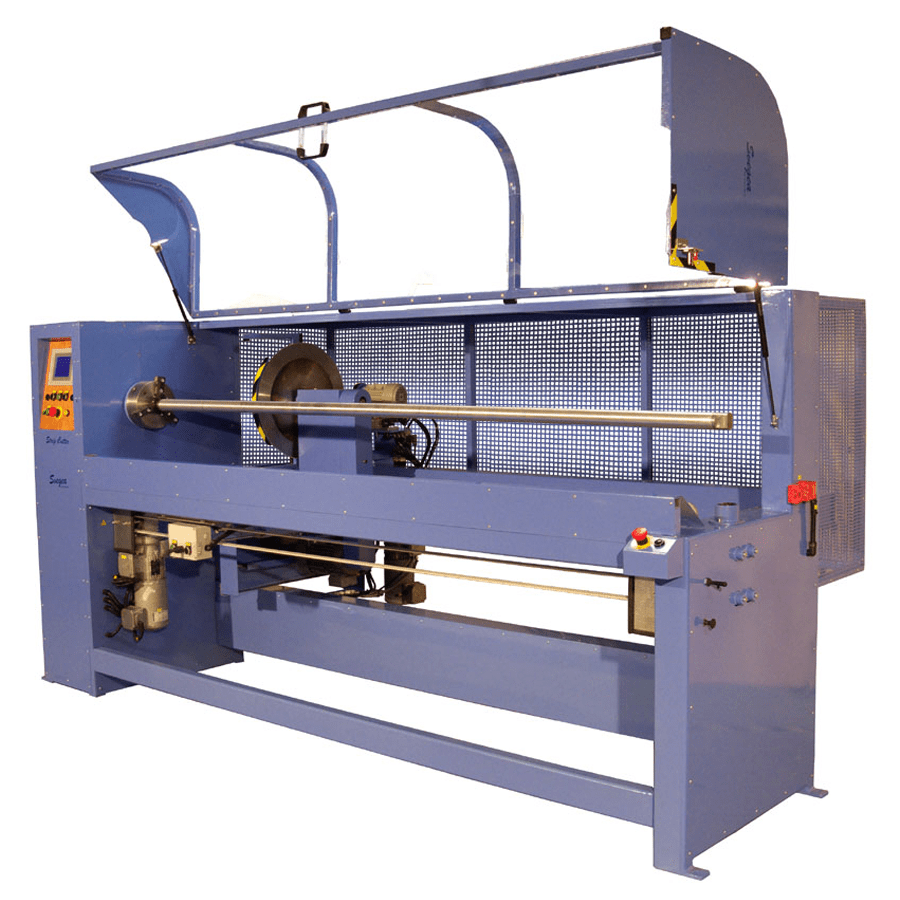
Svegea’s commitment to cutting-edge technology is evident in its award-winning products. The EC-450XF Collarette Cutting System, for example, sets new benchmarks in production excellence. Svegea’s global presence and bespoke services ensure that each solution addresses specific client needs, ensuring customer satisfaction and success.
The Future of AI in Textile Manufacturing
The integration of AI in textile manufacturing is just beginning. As technology continues to advance, we can expect even greater efficiencies and innovations. AI will likely play an increasingly important role in areas such as sustainable production, where it can help reduce waste and optimize resource use.
AI is revolutionizing textile manufacturing, driving efficiencies, and fostering innovation. Companies like Svegea are leading this transformation, offering advanced solutions that set new industry standards. As AI continues to evolve, the future of textile manufacturing looks brighter than ever. To learn more about how Svegea can help your business stay ahead of the curve, contact Håkan Steene at h.steene@svegea.se today!
As we step into 2025, the textile industry is undergoing significant transformations. From sustainability to smart textiles, the trends this year are set to revolutionize both fashion and home decor. Let’s explore the key textile trends for 2025 and how they are shaping the future of the industry.
Sustainability: The Green Revolution
 Sustainability continues to be a driving force in the textile industry. Consumers are increasingly demanding eco-friendly and ethically sourced materials. This trend is leading to a rise in the use of organic cotton, bamboo, hemp, and Tencel. Brands are also focusing on traceable supply chains and circular fashion, which includes repairable and biodegradable fabrics. This shift towards sustainability is not just a trend but a necessary evolution for the industry.
Sustainability continues to be a driving force in the textile industry. Consumers are increasingly demanding eco-friendly and ethically sourced materials. This trend is leading to a rise in the use of organic cotton, bamboo, hemp, and Tencel. Brands are also focusing on traceable supply chains and circular fashion, which includes repairable and biodegradable fabrics. This shift towards sustainability is not just a trend but a necessary evolution for the industry.
Smart Textiles: The Future is Now
The integration of advanced technology into fabrics is creating smart textiles that can monitor health metrics and regulate temperature. These innovations are set to revolutionize both fashion and home decor. Imagine clothing that can adjust to your body temperature or fabrics that can track your fitness levels. The possibilities are endless, and the future is now.
Digital Printing: Customization at Its Best
Digital printing technology is allowing for more intricate and customizable designs on textiles. This innovation enables brands to produce unique patterns and reduce waste compared to traditional printing methods. With digital printing, the textile industry can offer more personalized products, catering to the individual tastes of consumers.
Textures and Layers: Creating Visual Appeal
Mixing different textures and layers is becoming increasingly popular in home decor. Combining materials like velvet, linen, and wool can create visually appealing and inviting spaces. This trend is all about creating depth and interest in interior design, making homes feel more cozy and luxurious.
Bold Patterns: Making a Statement
Bold and eye-catching patterns are expected to be a major fashion trend in 2025. These patterns add personality and flair to both fashion and home textiles. Whether it’s a striking geometric design or a vibrant floral print, bold patterns are here to make a statement.
Advanced Apparel Manufacturing: Efficiency and Innovation
The use of 3D technologies and automation in apparel manufacturing is increasing efficiency and allowing for more innovative designs. These advancements are streamlining production processes and enabling the creation of complex and unique garments. The future of apparel manufacturing is bright, with technology leading the way.
Customization and Personalization: Meeting Consumer Demands
Consumers are seeking more personalized and customized textile products. This trend is driving brands to offer bespoke designs and tailored solutions. From custom-fit clothing to personalized home decor, the demand for unique and individualized products is on the rise.
AI and Data Analytics: Optimizing the Industry
Artificial intelligence and data analytics are being used to predict trends, optimize supply chains, and enhance the overall efficiency of textile production. These technologies are providing valuable insights that help brands stay ahead of the curve and meet consumer demands more effectively.
Innovation with the Right Tools
Having the right machinery is crucial to keeping up with these dynamic trends. For instance, the Svegea EC 450 XF Collarette Cutting System exemplifies how advanced technology can enhance textile production. Known for its precision and efficiency, this machine supports sustainable practices by minimizing material waste and optimizing resource use. Its versatility makes it a valuable addition to any textile manufacturing setup, aligning perfectly with the industry’s move towards automation and smart textiles.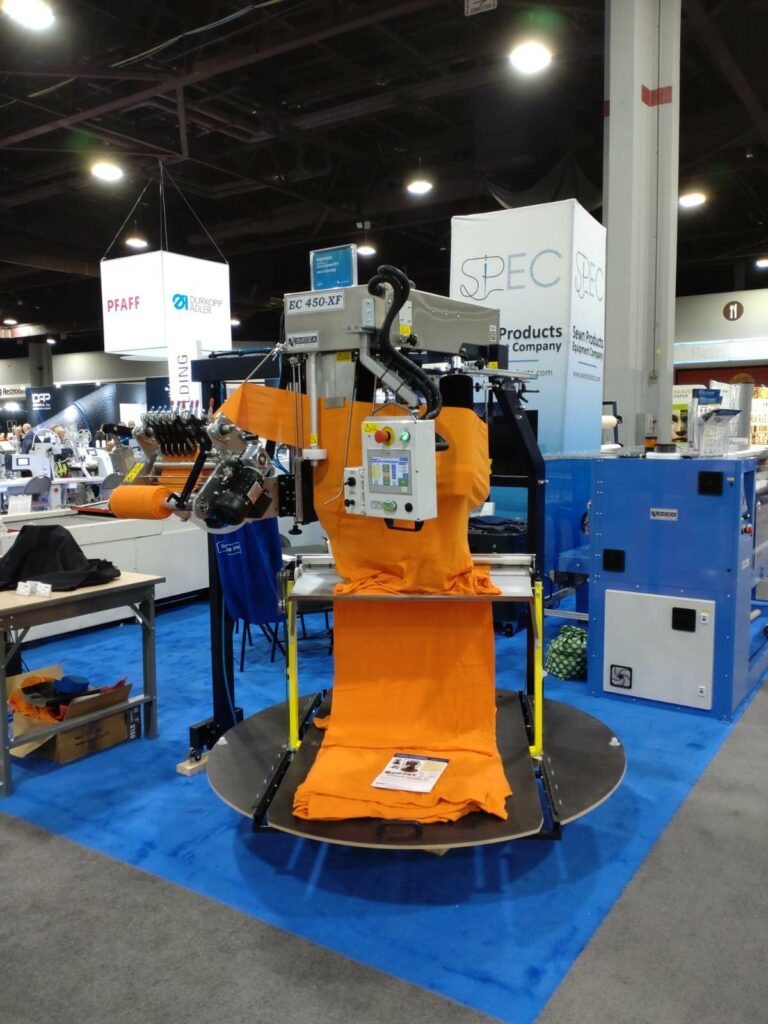
Embrace the Future of Textiles
The textile trends for 2025 highlight the exciting innovations and shifts happening in the industry. From sustainability to smart textiles, these trends are shaping the future of fashion and home decor. As we embrace these changes, staying informed and adapting to the evolving landscape is essential.
Keeping up with these trends requires the right machinery for those in the textile production industry. Contact Svegea of Sweden for all your textile production machinery needs. With its advanced technology and expertise, Svegea can help you stay ahead in this dynamic industry.
Choosing the right textile machinery can be a daunting task, especially with the plethora of options available in the market. The decision impacts your production efficiency, product quality, and overall business profitability. Here are some key tips to help you navigate this critical process.
1. Understand Your Production Needs
Before investing in textile machinery, it’s crucial to understand your specific production needs. Different types of machinery serve various purposes, from weaving and knitting to dyeing and finishing. Determine the scale of your operations, the types of textiles you produce, and your production goals. This understanding will guide your choice of machinery that best suits your requirements.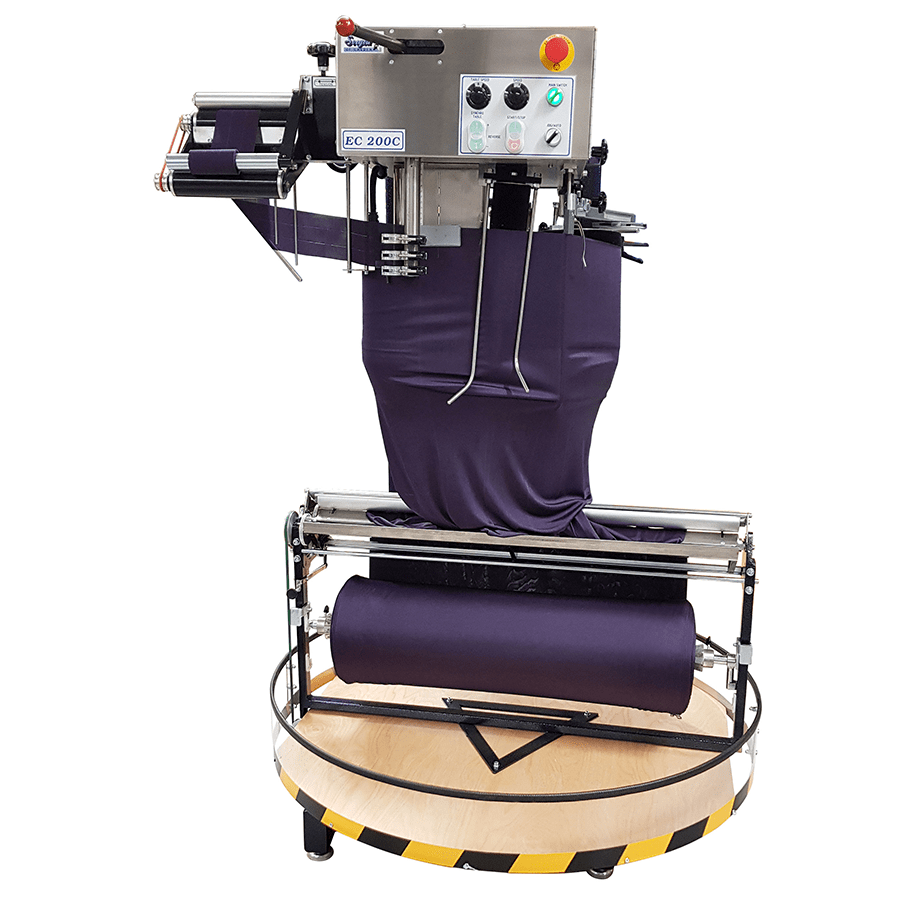
2. Evaluate Technology and Features
Modern textile machinery comes with a range of advanced technologies and features designed to enhance productivity and quality. Look for machines that offer automation, precision control, and energy efficiency. For instance, Svegea of Sweden offers cutting-edge machinery equipped with the latest technology, ensuring high efficiency and minimal waste. Our products are known for their durability and innovative features.
3. Consider Quality and Reliability
Quality and reliability are paramount when choosing textile machinery. Investing in high-quality machines may come with a higher initial cost, but it ensures long-term performance and fewer breakdowns. Research and compare different brands, read reviews, and consider the manufacturer’s reputation. Modesty aside, our brand has a proven track record of producing reliable and high-quality textile machinery.
4. Assess After-Sales Support and Maintenance
After-sales support and maintenance services are crucial for the smooth operation of textile machinery. Ensure that the manufacturer offers comprehensive support, including installation, training, and regular maintenance services. We provide excellent customer support and maintenance services, ensuring that your machinery operates optimally.
5. Analyze Cost and Return on Investment (ROI)
While the cost of textile machinery is a significant factor, it’s essential to consider the return on investment (ROI). A more expensive machine with advanced features and higher efficiency can lead to cost savings in the long run. Calculate the total cost of ownership, including maintenance and operational costs, and compare it with the expected benefits. Opt for machines that offer the best value for money.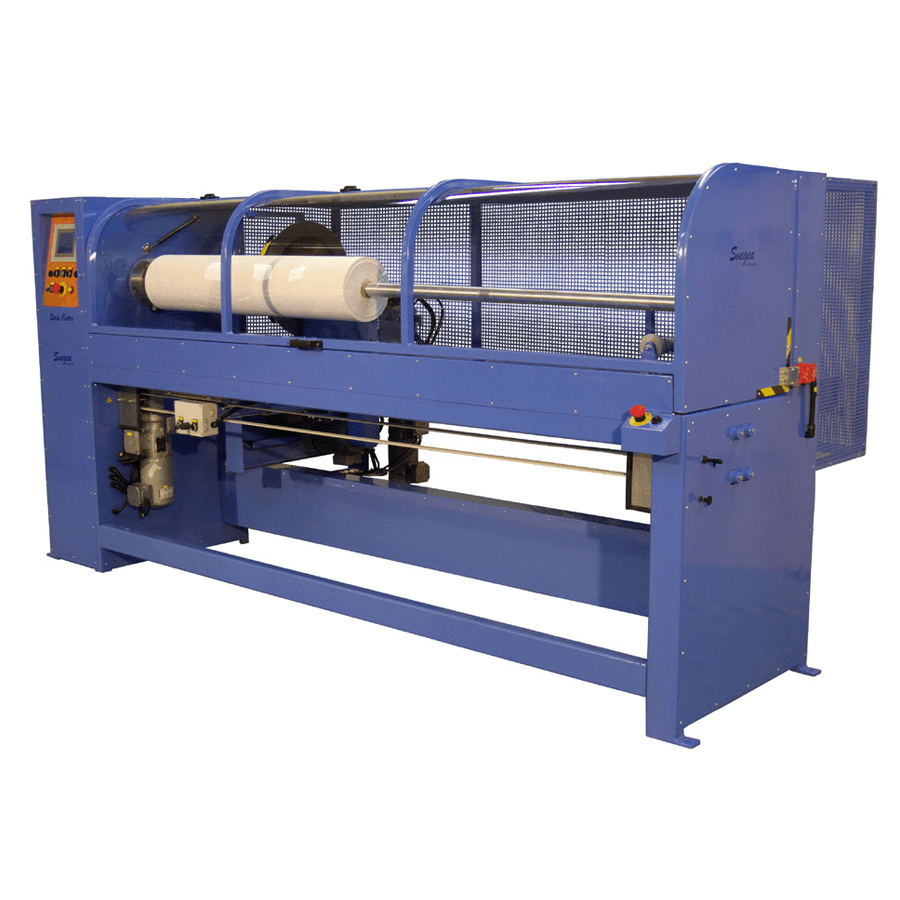
6. Environmental Considerations
Sustainability is a growing concern in the textile industry. Choose machinery that is energy-efficient and environmentally friendly. Machines that reduce water and chemical usage, minimize waste, and consume less energy are ideal. This Swedish textile company is known for producing sustainable textile machinery that aligns with eco-friendly production practices.
7. Compatibility with Existing Systems
Ensure that the new machinery is compatible with your existing systems and processes. Incompatibility can lead to production delays and additional costs. Consult with the manufacturer or a technical expert to evaluate the integration process. A company that offers flexible machinery solutions that can be seamlessly integrated into various production setups, should be the right choice.
Explore Svegea of Sweden’s Textile Machinery
Choosing the right textile machinery is a critical decision that impacts your production efficiency and product quality. By considering factors such as your production needs, technology and features, quality, after-sales support, cost, environmental impact, and compatibility, you can make an informed choice. Svegea of Sweden’s innovative machinery solutions are designed to meet diverse production requirements while ensuring high efficiency and sustainability.
Curious about how we can elevate your textile production process? Visit our product page for more information and start your journey towards optimal textile production today.



